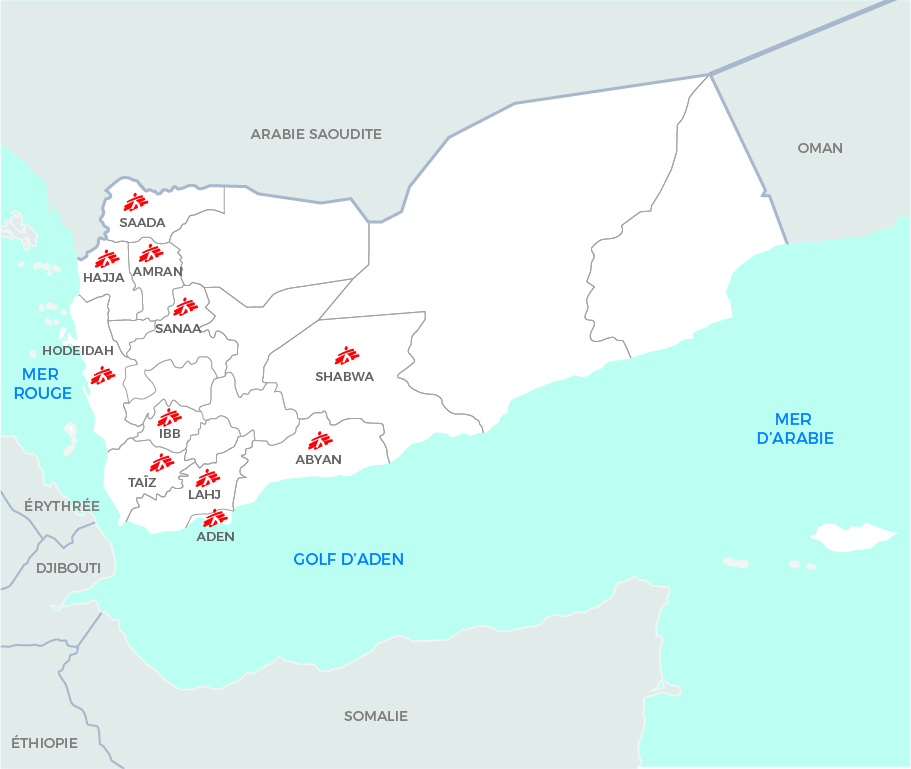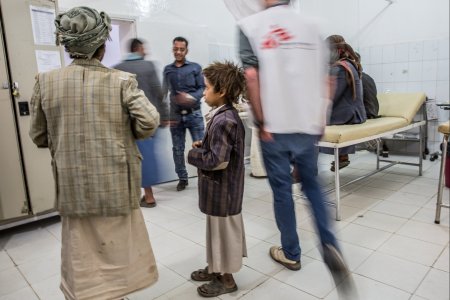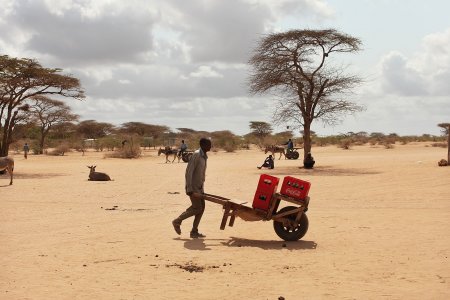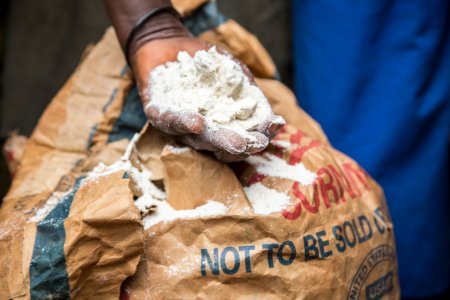
Yemen: questions about an aid system
V TLR
The situation in Yemen is often presented as the world’s worst humanitarian crisisFor example: UN News, “Humanitarian crisis in Yemen remains the worst in the World, warns UN” [online], published 14 February 2019, available at: https://news.un.org/en/story/2019/02/1032811 [consulted 17 May 2019]., long ignored by the media, and requiring assistance vital to the survival of almost the entire country. Cholera outbreaks, famine, and destruction are invoked to support that argument. In reality, however, the situation of the country’s 25 to 30 million inhabitants is impossible to know with any accuracy. Nor do we know exactly what is happening in Yemen in terms of aid, although the amount of funding is very large. Noting these diagnoses and its field teams’ perspective on certain points, Médecins Sans Frontières has launched an effort to better understand this field of action using a quantitative and qualitative approachThis document is based on information produced by several Médecins Sans Frontières members and services in Paris – in particular, CRASH, Epicentre, and the Operations Department.. A review of aid organisation documents and a series of interviews with aid actors in Yemen – in Houthi areas, in particular – has yielded a number of different conclusions.

First, some of the aid actors we met privately criticise the diagnoses. Tools like the Integrated Food Security Phase Classification (IPC), which is designed to give aid actors a standardised scoring system for diagnosing food insecurityMore information is available at https://fews.net/IPC., are being called into question. In addition to technical considerations regarding its methodological weaknesses, there have been reports of pressure by the belligerents on certain members of the diagnosing organisations – national ones, in particular – aimed at influencing (usually inflating) the numbers. It is very difficult to monitor the indicators, since parts of the country are inaccessible for security reasons and access depends, in particular, on the authorities’ goodwill. The manipulation of indicators is not unique to the Yemeni context; however, while MSF teams on the ground report cases of malnutrition – especially in children under five – in the areas where they work, these in no way indicate a famine or pre-famine situation. Moreover, many organisations are surprised by the discrepancies they see between the allegedly very high levels of food insecurity and the low mortality and malnutrition indicators. The information we got from the teams also indicates that there are sufficient quantities of food on the market.
If, as is likely, there is indeed food insecurity and malnutrition, it probably cannot be blamed on a lack of foodstuffs. The available data on food imports suggests this as well. Commercial and humanitarian imports appear to cover the country’s needs. Estimated by OCHA at 350,000 metric tons per month for Yemen as a wholeOCHA, Yemen: Commodity Tracker, January 2019., those needs seem to be covered the majority of the time (at least 26 of the 45 months from April 2015 to December 2018); given that imports far surpassed the needs in certain months and that our information is only partial, the reality is possibly greater. Distribution of and access to this food can be a problem, though, due in particular to the country’s security and economic situations, which are growing worse by the year. Between the pre-crisis period and the October 2018 peak, the value of the Yemeni rial against the dollar was reduced by a factor of 3.4WFP, Yemen Market Watch Report, Issue no. 32, January 2019.. And the average cost of the minimum food basket increased by a factor of 2.8 from its pre-crisis level to the October 2018 peakIbid.. Yemenis may therefore have difficulty getting access to food, especially since there are also recurring fuel shortages. Moreover, some observersSome echoes of which can be seen here, in particular: AFP, “Yémen : Pénuries d’essence, envolée des prix… Le quotidien des habitants de Sanaa, Capital” [online], published 19 September 2018, available at: https://www.capital.fr/economie-politique/yemen-penuries-dessence-envolee-des-prix-le-quotidien-des-habitants-de-sanaa-1307598 [consulted 11 June 2019]. point to the development of a war economy, resulting in artificially-created shortages aimed at enriching certain actors in the conflict. There are still unanswered questions, however, about the real number of “people in need” (OCHA’s term), how to calculate it, how it is changing, rising or falling by several million from one year to the next (15.9 million in 2015; 21.2M in 2016; 18.8M in 2017, 22.2M in 2018; and 24.1M in 2019Information available in the Humanitarian Needs Overviews, published by OCHA every year on Yemen.), and about potentially unrecognised needs and the assistance that might be set up to address them.
Second, the different UN agencies and clusters working in Yemen produce few detailed documents on their activities. While a few trends can be discerned from the documents available, the latter are usually devoid of precise data. Regarding food distributions, for example, to our knowledge – aside from the data on imports at certain ports – the only detailed information available are national numbers on how many people have received aid, and we do not know how they came up with those numbers. Even taking just what is reported, it is difficult to know which projects the allotted funds go to and how those funds are actually used, other than in very general terms or regarding marginal aspects. For example, an interested person can learn in detail how many people the Logistics Cluster escorted from Djibouti to YemenAn example is available here: Logistics Cluster, Passenger Sea Transport Overview [online], available at: https://logcluster.org/document/yemen-passenger-sea-transport-overview-february-2019 [consulted 17 May 2019]..
Third, and this is related to the lack of precise information on aid projects, there appears to be very little actual monitoring of the aid. Hence relief organisations have a hard time giving a clear account of their actions. World Food Programme (WFP) and Health Cluster operations are done in partnership with the country’s political authorities, in particular the Ministries of Education and Health (for the northern, Houthi-controlled part of the country), which are given most of the responsibility for setting up relief activities and have very little independence from the belligerents. While this method of implementation, via administrations, is not specific to Yemen, it is of questionable relevance when there is no control over the activities being conducted and such large volumes are involved. Aware of such difficulties, the WFP finally bit the bullet and spoke out publicly at the very end of last year, talking about its lack of control and condemning Houthi misuse of the food aidWFP, “WFP demands action after uncovering misuse of food relief intended for hungry people in Yemen” [online], published 31 December 2018, available at: https://www1.wfp.org/news/wfp-demands-action-after-uncovering-misuse-food-relief-intended-hungry-people-yemen [consulted 16 May 2019].. The organisation reiterated its accusations in late May 2019, threatening to halt some of its programmesWFP, “WFP to consider suspension of aid in Houthi-controlled areas of Yemen”, ReliefWeb [online], published 20 May 2019, available at: https://reliefweb.int/report/yemen/world-food-programme-consider-suspension-aid-houthi-controlled-areas-yemen [consulted 24 May 2019]..
The fact is that the parties to the conflict exert particularly heavy influence over both UN and non-UN aid organisations. Humanitarian action is limited first by restrictions on visas and permits for travel within the country, which makes setting up relief activities difficult. And once the aid is deployed, the belligerents maintain very tight control over itAziz El Yaakoubi & Lisa Barrington, Yemen’s Houthis and WFP Dispute Aid Control as Millions Starve, Reuters [online], published 04 June 2019, available at: https://www.reuters.com/article/us-yemen-security-wfp/yemens-houthis-and-wfp-dispute-aid-control-as-millions-starve-idUSKCN1T51YO [consulted 11 June 2019].. For example, according to the information we collected, some Houthi leaders regularly demand access to lists of beneficiaries, of food aid in particular – access involving very tense negotiations with the organisations. That control also exists within the international NGOs, whose employees sometimes fear that their national teams include informers with ties to the belligerents. There are actually very few international staff in Yemen: one fourth to one sixth the number involved in the other two major ongoing crises (DRC and South Sudan, respectively). There has also been a lot of volatility in the number of OCHA’s national partner organisations from 2015 to 2018, which raises questions about the sustainability of the actions and the reason for such variability in OCHA partnerships.
So accurately documenting the humanitarian situation and aid in Yemen is complicated. Evaluating the aid system, how it has gone off-course, what benefits the Yemeni people derive from it, and how the belligerents are profiting from it requires all kinds of conjecture, especially since the actors’ intentions add a layer of complexity in an environment where it can be hard to discern why they are doing what they are doing, or at least their rationales. What impels Saudi Arabia and some of its allies in the fightingAccording to the Financial Tracking System, Saudi Arabia, the United Arab Emirates, and Kuwait, all three stakeholders or allies of the Arab coalition participating in the fight against the Houthis, represent 47% (more than 1.2 billion dollars) of the funds allocated to aid as part of OCHA’s 2018 humanitarian response plan, whereas their participation had been marginal prior to that. to support a system that seems to greatly benefit their enemies on the ground? In what political game is international aid playing a part, in a country where regional and global issues seem to have crystallised (conflict between US ally Saudi Arabia and Iran, whose close ties with the Houthis are often highlighted; recently mounting tensions between Iran and the United States, a major WFP funder)? Why has the WFP agreed to relinquish management of aid distribution? What are the UN organisations’ objectives in promulgating descriptions of the situation that bear little relationship to the reality observed in the field?
While Yemen is the largest humanitarian operation of all time, receiving more than 11.2 billion dollars in aid since 2015Calculation based on data available on OCHA’s Financial Tracking System website, which can be consulted at: https://fts.unocha.org., its contours are fuzzy at best, even after investigation. Often, the humanitarian actors in the field know only their own area of action, and are unable to construct an overall assessment. And Yemeni voices are clamouring for more transparencyMohamed Yahya Gahlan, “Yemenis demand aid transparency as humanitarian crisis rages”, Al-Monitor [online], published 14 May 2019, available at: https://www.al-monitor.com/pulse/originals/2019/05/yemen-aid-transparency-campaign-online-financial-war-refugee.html [consulted 17 May 2019].. Calling the humanitarian crisis in Yemen “the worst in the world” is not only most likely incorrect – it is also inept, given how inflated the diagnoses seem and how much aid is available. The opacity surrounding this operation and the control the belligerents exert over the humanitarian actors is not specific to Yemen. It can be found in a number of other current and past theatres of conflict – the massive, and massively misused, operations in South Sudan, in particular. The question here today, as there in the past, is who benefits from the aid as it is currently configured: the populations in need, or other actors – including the ones with power in the conflict?
To cite this content :
V TLR, “Yemen: questions about an aid system”, 20 juin 2019, URL : https://msf-crash.org/en/blog/war-and-humanitarianism/yemen-questions-about-aid-system
If you would like to comment on this article, you can find us on social media or contact us here:
Contribute



Commentaires
I find this content very informational and authentic. It provides me a lot of information regarding War in Yamen and aids their aid system. I am a regular follower of your blog and looking to read more of your content. keep it up.
Add new comment